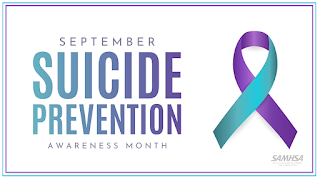Building Hope
According to the Merriam-Webster dictionary, hope is defined as the following: “to cherish a desire with anticipation.” The pandemic has handed us many losses - death of loved ones, missed milestones/celebrations, and irreplaceable family time. Amidst these losses, it might be difficult to look forward to things.
Several months into the pandemic, I found myself in a hopeless state of mind. This new way of living seemed permanent. My fears related to the virus had overthrown any hope I had. I couldn’t see the end to the virus and the isolation. Hopelessness is linked to the deterioration of our physical and mental health. I was having frequent headaches, joint pain, and obsessive/anxious thoughts. Due to these connections and gentle prompts from others, I knew that I had to take intentional steps to adjust my thoughts and perspective.
My first battle was recognizing certain thoughts as negative and hopeless. I have to admit, this part was difficult. It wasn’t something that I was able to do independently. With tender cues from others, I was able to stop and inspect my thoughts and the things I was saying. As I began to really think through the things I was saying to myself (we call this self-talk), I realized that some of my self-talk wasn't based in reality.
I needed to confront these thoughts before they took total control. I challenged my self-talk by creating a script that I recited to myself whenever the hopeless or anxious thoughts crept into my mind. The script was something I wrote down on my Notes application (on my phone) so it was readily available. This helped me stop the negative thoughts and reframe them into something that was more realistic.
Example:
Thought/Self-Talk :“Because of the virus, I am never going to be able to leave my house again.”
Script: “The virus is real and it is dangerous. However, the isolation I am experiencing now will will protect me. The isolation will not last forever. It is temporary.”
The script is based in reality. It challenges me to determine whether or not my original thought is based in reality and helps me shift my perspective. I now have multiple scripts on my Notes application that I read in various personal and professional situations. A script that is applied to a professional situation might look like this:
Example:
Thought/self-talk: “I am a terrible teacher.”
Script: “Teaching during a pandemic is really difficult. The pandemic has presented me with many challenges. I am doing the best that I can this year to help my students learn and make progress.”
These scripts can help you recognize negative/hopeless thoughts, reexamine the thoughts, and redirect them. We call this the 3 R’s strategy. During the past few months, I have been able to reframe my negative thoughts into ideas that are productive, positive, and based in reality. To learn more about creating and writing scripts, click here.
Secondly, I began journaling about my anxious thoughts. Our previous blog post goes in further detail about the specific writing strategies I used and how they were beneficial. Gratitude journaling, documenting things you are thankful for, has also been shown to reduce stress, help individuals change their perspective, and help people become more self-aware. Gratitude journaling doesn’t have to be complicated. You can simply make bulleted points of things that you are thankful for. Research indicates that doing this once to twice a week can boost happiness. Acknowledging the things you are thankful for instantly changes your perspective. I saw this in my personal life. Whenever I felt hopeless, I reviewed my gratitude journal and realized that things really weren't as grim as they seemed. This also reinforces the idea that my self-talk and automatic thoughts aren’t always the reality.
Thirdly, to specifically challenge my hopeless feelings and thoughts, I had to remind myself of “why.” As Simon Sinek says in his TedTalk, I had to consider “my cause, my purpose, and my belief.” While Sinek’s theory is for leadership and marketing, it's rooted in human behavior. I had to remind myself of my purposes, my beliefs, and my causes. When compounded with the journaling and scripts, my behavior and thoughts changed. I could see that eventually, the things that were impacting me, would end. I was beginning to see that the virus was temporary. This process wasn’t quick. However, each day, I noticed small and slight changes in my thinking. Over time, my thoughts turned from hopeless to hopeful. I am beginning to “desire with anticipation.”
Check out these resources for other ideas and ways to create hope:
- Scientifically Backed Ways to Create Hope
- Messages of Hope
- How to Be Hopeful, Even When It's Really Hard
- What is Hope?
National Suicide Prevention Lifeline: 1-800-273-TALK (8255)



Comments
Post a Comment